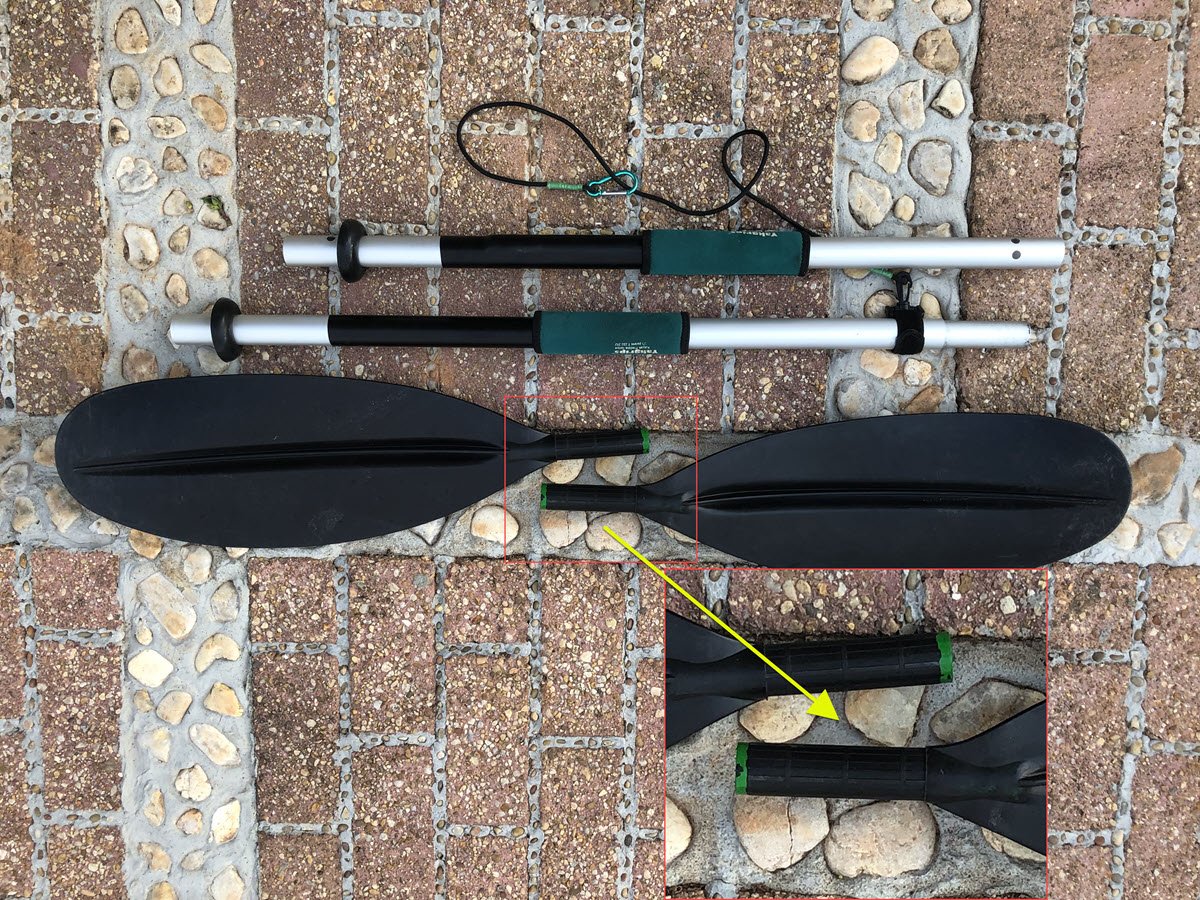
Winnie bought me a kayak as a birthday gift in July 2010. From my first paddle outing I was completely hooked on the relaxing sport of kayaking. Of course, one can never have just one kayak, just as one can never get by with one pair of shoes.
In the years since my first kayak, which I still have, Winnie and I have added two inflatable kayaks to our fleet. The first is a Sea Eagle 370, a 12-1/2 foot tandem kayak. The second is a Sea Eagle 330 ten-foot kayak. With use, I’ve come up with some minor modifications and useful accessories. So in this post I’m going to describe my favorite mods, conveniently known as “,” along with useful accessories.
Recommended Hacks
There are a number of different type inflatable kayaks on the market. However, Sea Eagle is arguably the largest and best known company in this market. They produce a range of boats including inflatable kayaks and canoes, inflatable fishing boats, general use inflatable boats, and inflatable Stand-Up Paddleboards (SUP). Sea Eagle also has a nice selection of accessories that enhance their boats. The company has a solid reputation for excellent customer service and rugged, highly serviceable products.
The Sea Eagle 370 and 330 are advertised as their most popular boats. Both come as complete kits of boat hull, inflatable seats, four-piece paddles, foot-operated air pump, and storage bag. The company also throws in a repair kit, which I think is a nice touch. The only difference between the two boats is their length.

As mentioned, over the years of owning and using these boats, I’ve come up with a few hacks. So here we go!
Color-Coded Paddles
These Sea Eagle kayaks are advertised as two-person boats, and come with two sets of paddles (and seats). The paddles break down into four pieces – a two section shaft and the paddle blades. The paddles have a right and left blade per set, which is not always obvious to the casual observer while rushing to assemble everything and get into the water. So my first hack is to color-code the paddle sets.
I used “Yakgrip” paddle grips, which are foam rubber tubes that slide over the shafts of metal paddle shafts. They make for a comfortable non-slip grip, and help with placement of my hands on the shafts. These grips come in a variety of colors, so I used one set of red grips and one set of green grips on my paddle shafts. Then I used some model paints to add red and green rings on the socket ends of the paddle blades. I’ve found that I can put the paddles together much faster, without mixing up the blades, when the parts are color-coded. And just for the extra coolness factor, I made up color-coordinated paddle lanyards.

As an alternative to Yakgrips you could also use colored electrical tape to color-code the paddle shafts, or just paint on stripes.
Strapping The Boats in Storage
The next hack is storage. These boats are designed to be rolled up and stuffed into a storage bag along with all accessories. The problem I kept running into was the boat hull would take up so much space there wasn’t room for the accessories. The seats, especially, take up a lot of space just because of how thick the material is. Where it really became an issue was with my smaller 330, which I purchased to take with me through airlines while on business trips.
I finally identified that while I could roll the boat hull small enough to fit into the bag with space left over, the hull would then unroll. My then-obvious solution was to use a nylon strap to hold the rolled-up hull tight. This works well, and I now use straps on both the 330 and 370.

Tying Inflation Gauge To Foot Pump
This is a small thing, but still handy. The side tubes of the boats need to be inflated to a specific pressure for hull strength. Sea Eagle uses an “inflation monitor,” a plastic measuring template with lines that match a template printed on the sides of the tubes. As the user pumps up the side tubes, they expand, and at some point the lines on the printed template of the tube will match those on the inflation monitor. Simple, but very effective. The tube’s template is located close to the inflation valves.
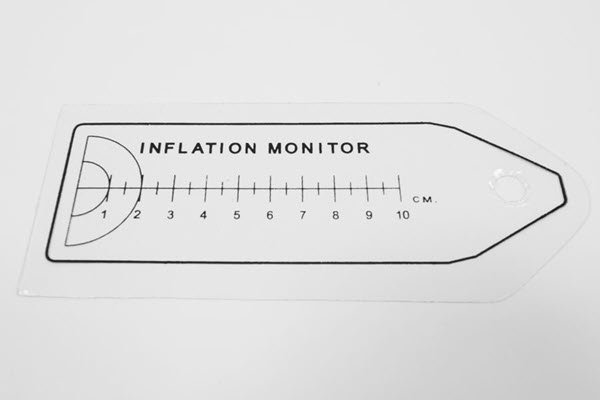
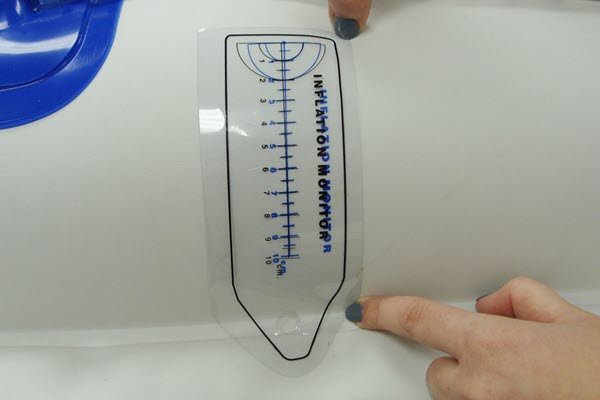
My simple hack is to tie a lanyard from the hole in the end of the inflation monitor to the air pump hose. This keeps the inflation monitor where you need it, and decreases the chance of losing it. Size the loop around the air hose so it moves freely, but doesn’t come off either end.

Storage Bag for Airline Travel
I purchased the Sea Eagle 370 as a tandem kayak, so my wife or other guests could paddle with me. I later picked up a Sea Eagle 330 as a traveling kayak. The hull only weights 26 pounds, and with a paddle, seat, and foot pump easily comes in under the weight restrictions for airline checked baggage. However, as light as the kit is, the Sea Eagle storage bag is awkward to lug around. Plus, it’s a dead giveaway you’re carrying sports gear on a business trip. So my trick is to use standard luggage for packing my gear on a trip.
I substituted the standard Sea Eagle bag with an Ikea “Humlare” duffle bag. This bag is smaller than the Sea Eagle bag, has backpack straps with a handle grip, internal stiffeners and flat base, with a zipper closure. The stiffeners and base let the bag stand upright when empty, which makes loading gear easy. Since this is a standard green duffle bag, it doesn’t scream “SPORTS GEAR.” I’ve talked to other folks who use a wheeled duffle bag to carry their gear.
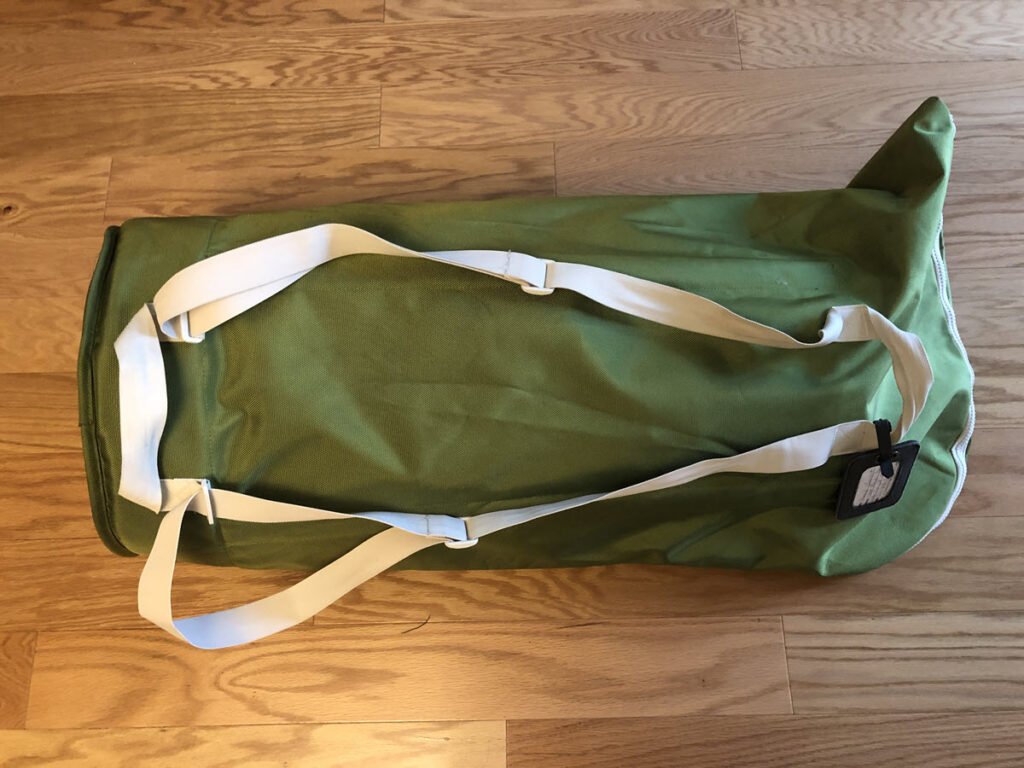
I’ve found I can pack my 330 hull, one paddle set, a seat, and foot pump, in this bag with room left over for some clothes. The rest of my clothes and toiletries go into a carry on along with my laptop, and I’m good for a standard four-night five-day trip.
Then the trick becomes finding time for a little paddling between work…
Anchor Trolley
I’m not much of a fisherman, but I occasionally like to drown some worms (Sea Eagle’s Multi-Purpose Storage Bag makes it easy to carry a couple of rods and fishing gear). While fishing, it helps to have an anchor to keep you in a given fishing spot. For this, you need an anchor trolley. An effective anchor trolley acts as an adjustable anchor cleat, allowing you to adjust the angle of your boat based on changing wind conditions or tide movement. However, Sea Eagle kayaks are lacking any kind of cleats.
Anchoring a kayak from amidships (by tying it off to you or your seat) is dangerous as the wind and current can easily flip over an anchored boat. To anchor safely, you need to have the anchor line putting tension on the boat from bow or stern. Regular hard shell fishing kayaks typically come with an anchor trolley. So I designed a simple anchor trolley rig using two small plastic clips, an aluminum carabiner, and some nylon cord.

Use the two plastic clips to hook onto about midway on the bow and stern rigging.
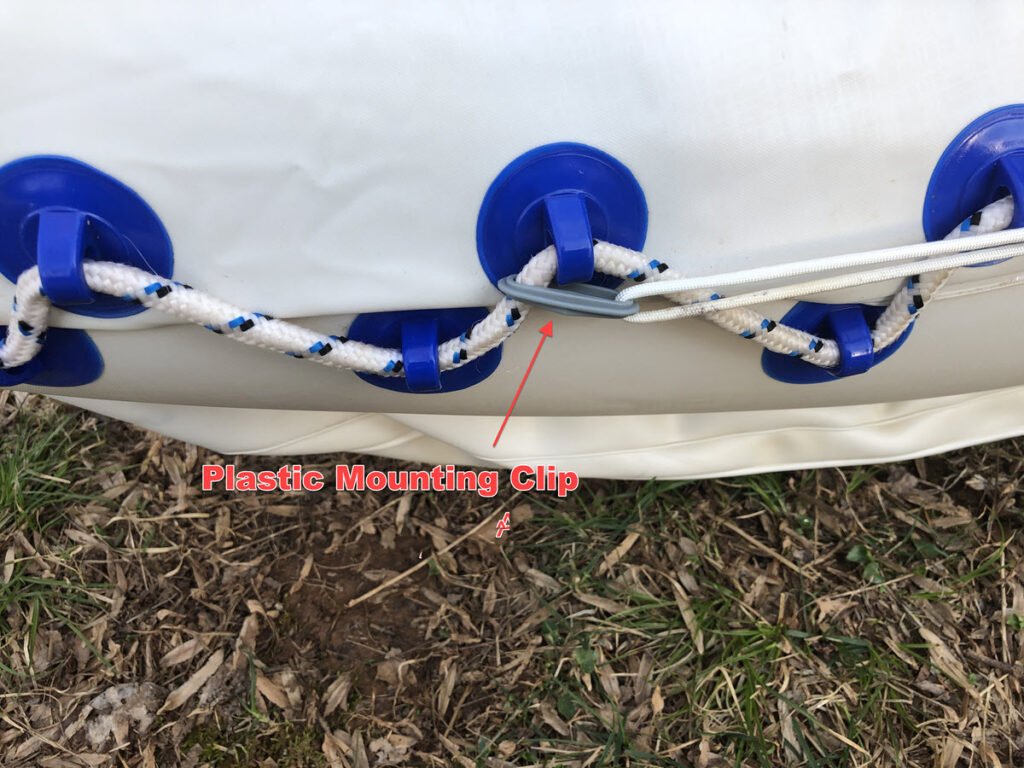
Run the nylon cord through the clips and tie off to the larger aluminum carabiner. Don’t make the cord too tight, as you may distort the shape of the boat. The cord should be loose enough so it slides through the clips.
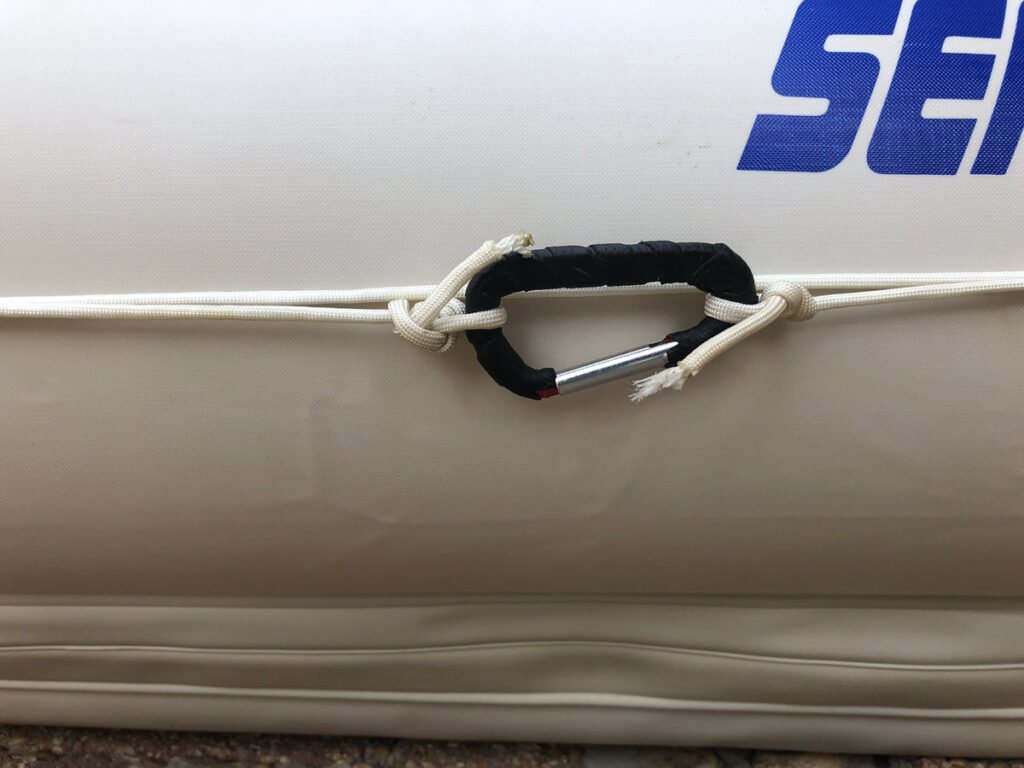
In use, run your anchor line through the large carabiner, and pull the carabiner up all the way to the bow clip. Throw out your anchor (or plant your pin), and tie off the anchor line to your Pro seat strap (or to the carabiner, if you don’t have the pro seats). I use plastic clips because I don’t like metal touching the boat fabric. I cover the main carabiner with electrical tape for the same reason. But, you could use small metal carabiners for the bow and stern clips.
Registration Stickers
Some states require kayaks to be registered and carry registration stickers. Which is a real problem for Sea Eagle 330/370s, as the manufacturer strongly recommends against putting stickers on the hulls (the fabric is designed to stretch with inflation). My home state of Virginia does not require kayaks to be registered, but I sometimes paddle in Pennsylvania which does.
To display the registration stickers I made up two flat squares of plastic from an empty milk bottle and drilled a 3/16″ hole in the top edge of each. I put aluminum carabiners through the holes and put the registration stickers on the plastic squares. I hang them from the bow rigging when I’m paddling in Pennsylvania.
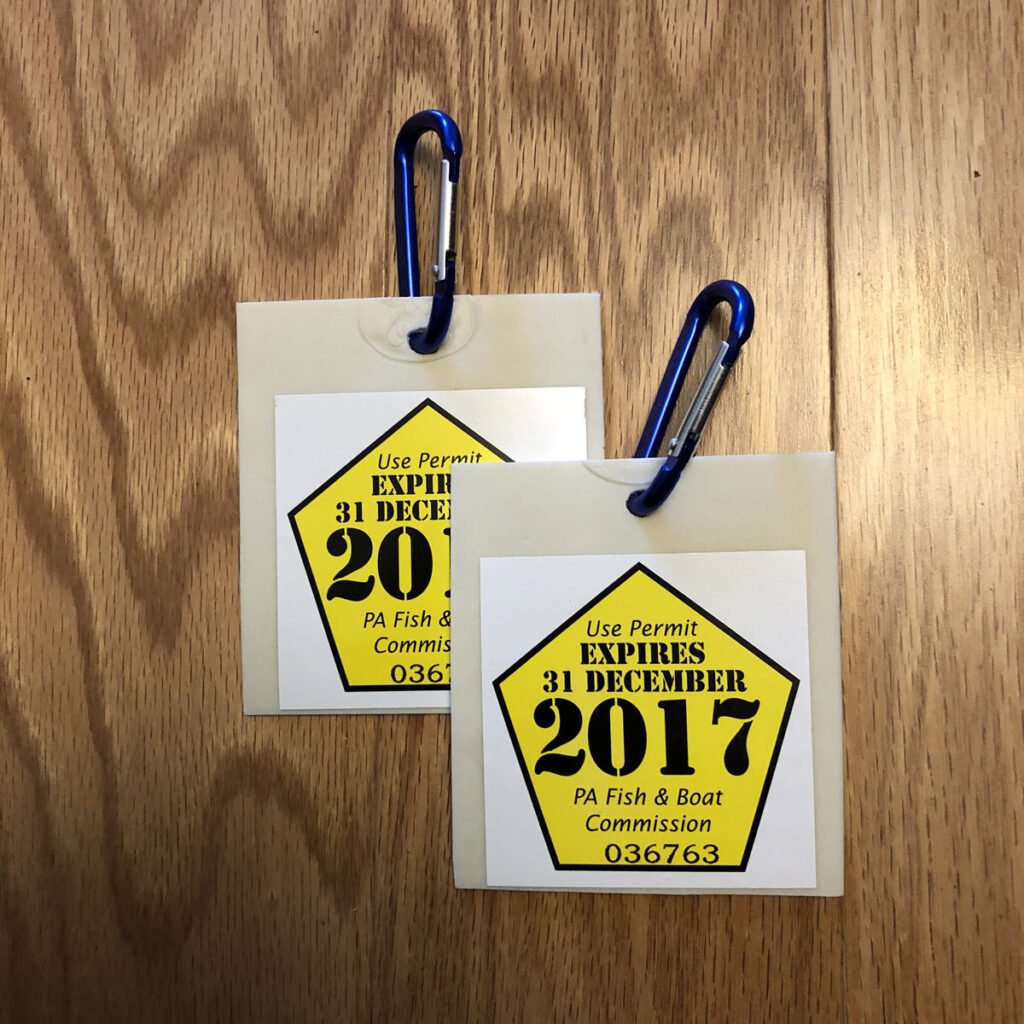
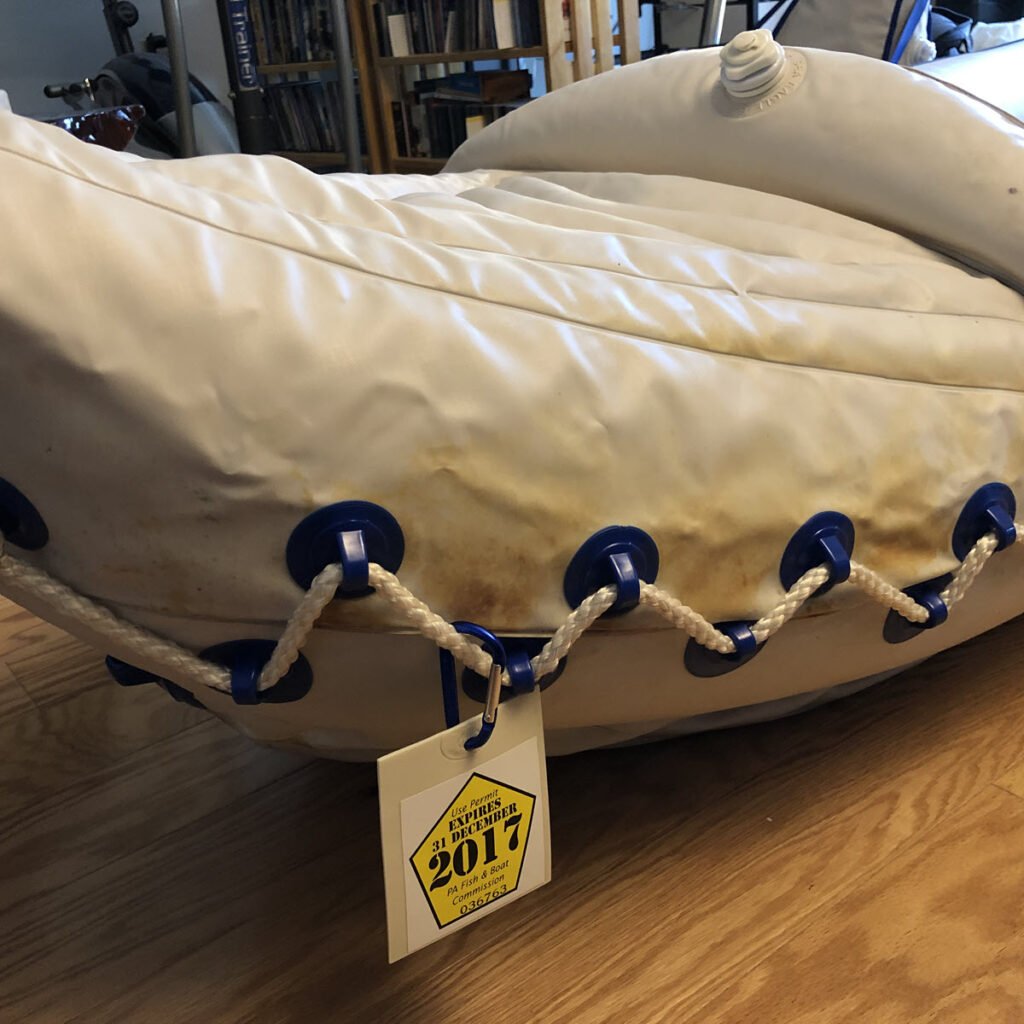
Safety note: these plastic backings would also work well for U.S. Coast Guard’s “Operation Paddle Smart” vessel identification stickers.
Silicon Lubricant on Gaskets
The Sea Eagle 330 and 370 have a total of five air valves on the hull, plus two for each seat. They also have a drain plug in the back. Each of these has rubber sealing gaskets. To make it easier to open and close these seals, use some silicon lubricant on the rubber sealing surfaces. This is a specially-designed lubricate for rubber gasket and O-ring seals, and using the lubricant makes it much easier to screw-tighten the valves closed and open. You don’t need much lube on each seal. Just wipe on a thin coating at the beginning of each season using a q-tip©. A three-ounce tube of silicon lubricant will probably last you a lifetime (or until you stop kayaking, whichever comes first).
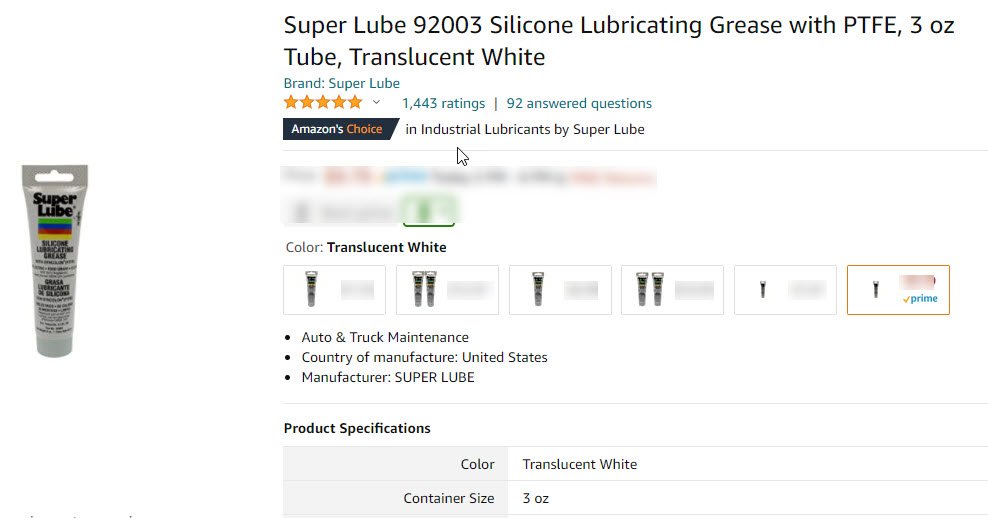
One caution; do not ever use petroleum jelly (such as vaseline© ), as this may damage the gasket rubber.
Recommended Accessories
Some recommended accessories that I’ve found real useful for my kayaking adventures:
Personal Floatation Device (PFD)
I hate to harp on basic safety, but kayaking can be dangerous. The U.S. Coast Guard Boating Accident Statistics for 2019 show that kayak-related fatalities won second place for highest number of fatal accidents (losing out to open motorboats in first place).
The type of PFD I prefer is one with lots of pockets and a high back, or mesh back. Having a “high back” means floatation padding sits higher up the back instead of being fully padded, as with standard PFDs. A “mesh back” means there is no floatation padding in the back at all. I’ve found I sit more comfortably if my PFD doesn’t have that back padding interfering with the seat back. Not that Sea Eagle seats are all that comfortable to start with. The company NRS offers a nice selection of PFDs for kayaking.
A Bag To Hold Your Gear
I’ve accumulated various small pieces of kayaking gear over the past years. I don’t always need all the gear for a given trip, but when I’m ready to get into the water, I don’t like hunting around to find what I need. I use another Ikea product, their blue Frakta storage bag, which is perfect for holding all my stuff. When I’m ready to hit the water I grab my Sea Eagle bag, my PFD, and my Frakta bag of accessories, and go. At the water, I’ll decide what accessories I want to pack that trip, load them into the boat, and throw the bag back in my car.

Plastic Pouches for Cellphones
Electronics and water don’t mix well, and water normally wins. If you’re going to carry your cellphone with you, you should keep them in waterproof pouches that are more-or-less optically clear, and allow you to use the touch screens without taking your phone out of the bag.

Zip Lock bags for Car Keys
Most car keys now-a-days are electronic, and the same rules on water and cellphones apply to electronic keys. You could use a waterproof pouch for your car key, but a good quality zip lock bag also works fine. Try the kind that have the color seal which changes color to green when the seal is properly made. The Sea Eagle Pro seats have a small closeable pouch on their backs, which is just the right size for storing your bagged keys. If you use this pouch, you don’t need to worry about losing your keys if your boat flips over. If your PFD has zippered pockets, this is also a good place to store your keys.
Dry Bag Electronics Rescue
Last but not least; in case you and your electronics do get wet, you want some first aid for your electronics. Electronics and water do not mix well, and water normally wins. The last time I flipped my boat I was in Florida, in a salt water bay. The water was only four feet deep so no danger to me. However, my cellphone pouch turned out to not be so waterproof, which was immediately discernable by seeing salt water inside the bag after getting back on shore. A local cellphone repair shop charged me to drop my cellphone in a “dry bag,” and told me to leave it in for three days.

It worked well enough to dry out my cellphone and kept it working several months, long enough to have all my data backed up. However, a dry bag itself costs a fraction of what the repair shop charged me. So now I keep one of these bags in my kayaking kit. Just in case.
Happy Paddling!
Related Projects
- Boating Hacks: Sea Eagle Skeg Guard: A quick “Do-it-Yourself” project to make an improved storage skeg guard for the Sea Eagle 330 and 370. This guard prevents the skegs from permanently bending over while the boat is stored.
- Boating Hacks: A Kayak Light Mast: Another quick “Do-It-Yourself” project to make a light mast for any kayak that has a fishing rod holder. Displaying proper navigation lights while night-kayaking is both a Coast Guard requirement and prevents getting run over by power boaters.
Related Posts
Updated: April 7, 2021, with additional accessories and modified formatting.
Updated: July 19, 2022, adding a link to Skeg Guard page.
Updated: October 25, 2022, adding a link to kayak light mast page.

